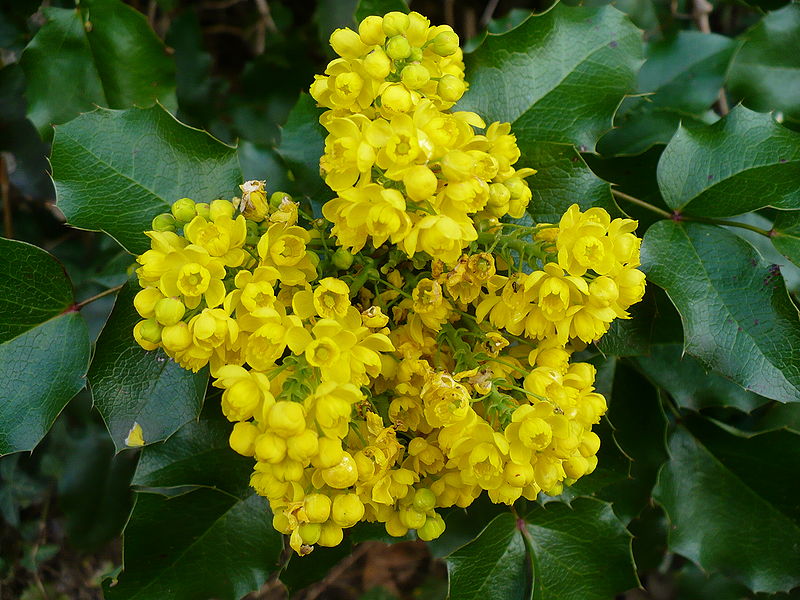| PSC 2620: Woody Trees and Shrub | Course Home | Week 9 |
Mahonia aquifolium 'Compactum' - Compact Oregon Grape
Plant Viewer
 |
 |
| Oregon Grape is a small, compact semi-evergreen shrub. | The dark, glossy green leaf is odd pinnately compound with each leaflet having 6-12 spines per side. They can turn a bright red in the fall. |
 |
 |
| The yellow flowers are held in small racemes on the plant in the spring. | Large clusters of blue berries are held in grape-like clusters into the winter. |
Plant Description
Magonia aquifolium 'Compactum', or Compact Oregon Grape, is a small to medium (3-6 feet high and wide) semi-evergreen shrub. It has a loose and sparse branching pattern with a rounded spreading form. It prefers moist and shady locations and needs to be protected from wind. It grows best in acidic soils, but is tolerant of our alkaline soils.
The leaf is odd pinnately compound, 6-12 inches long, and a dark glossy green color. Each leaflet is ovate in form and 1 1/2 - 3 1/2 inches long. The leaf margin is spiny typically with 6-12 spines per side. In the spring, new leaves have a red overcast to them, and in the fall the leaves will usually turn a bright red color and drop.
Yellow flowers appear in the spring. They are held on small racemes that appear at the terminal bud of the stem. In the summer, black-blue fruit forms. The berry fruit is 1/2 inch in diameter and forms in clumps like grapes. The fruit will persist into the winter.
Landscape Use
Use as a foundation planting in shaded locations, or for its fall color and winter berry interest. It is a bit tender, and should not be planted in stressful situations.
Points of Interest
Leaf rust, leaf spots, leaf scorch and leaf burn are all problems. In our climate, leaf scorch in particular is problematic on plants planted in full sun.